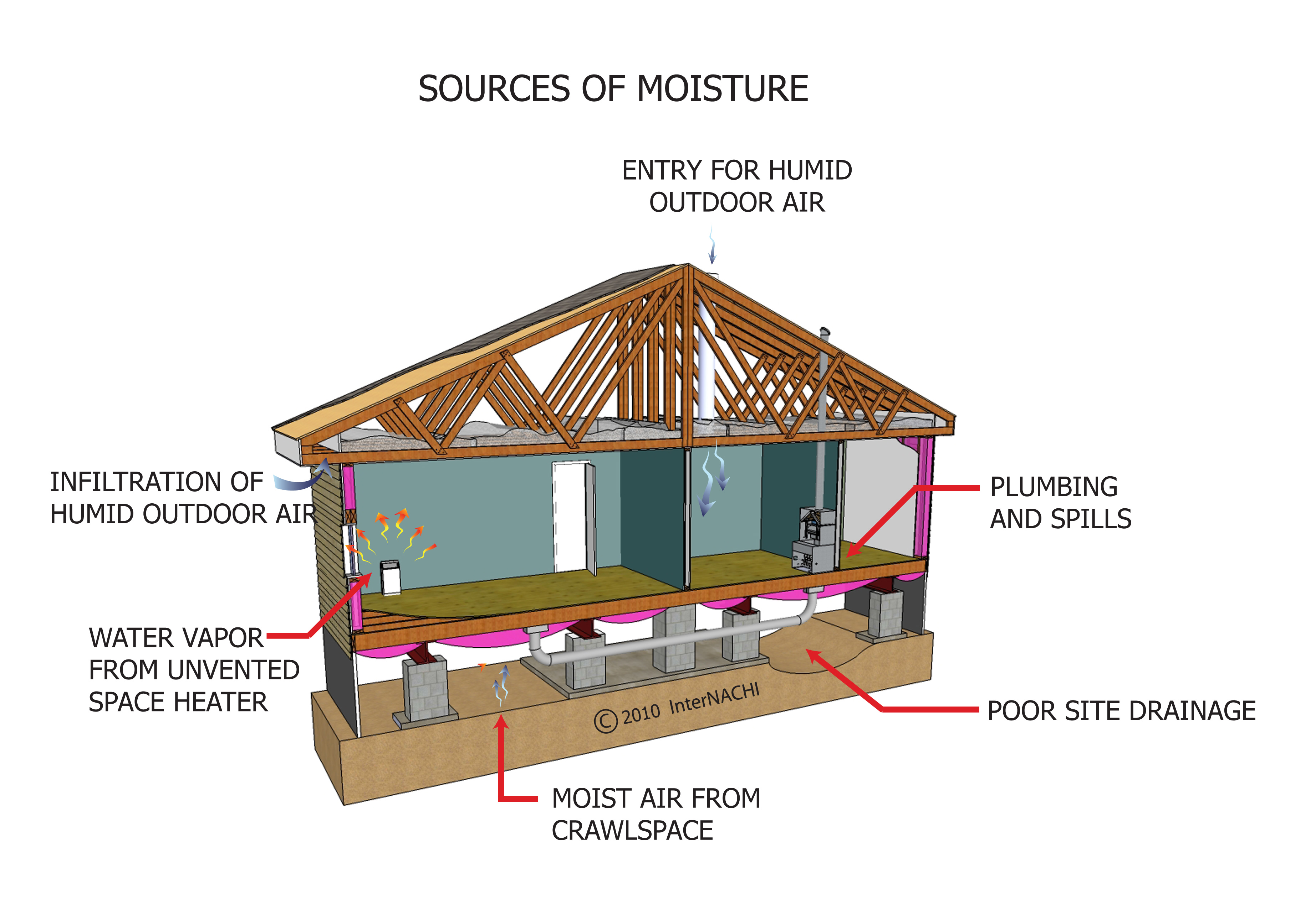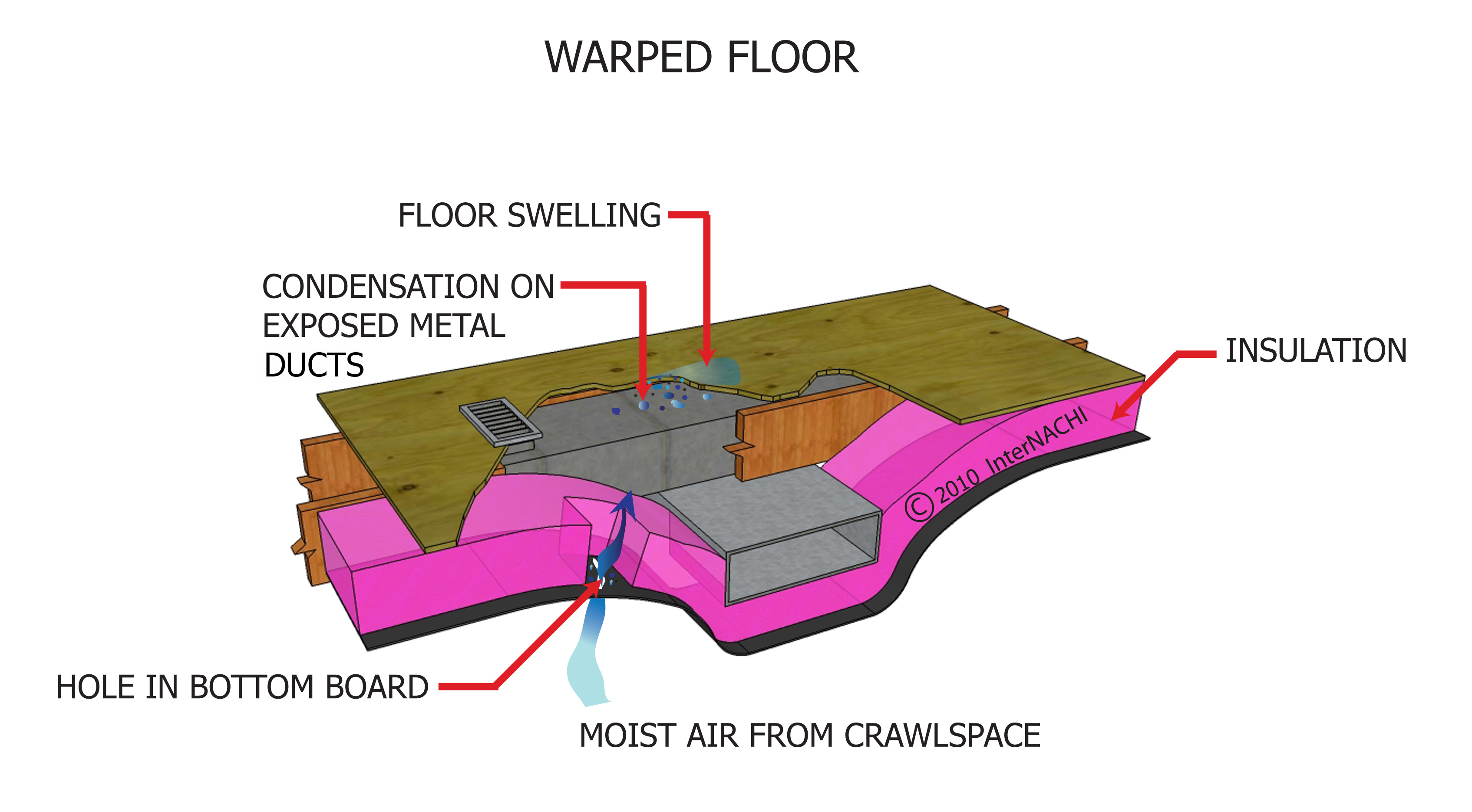Not many crawl spaces where I am. I only inspected one. It was as dry as a pop corn f@rt. The soil was powdery dry. Maybe you could use the figures you found (20 - 30 gallons/day/1400 sq ft for the high end and negligible for the low end. Just a thought.
Marcel, Awesome.
But that doc is a little dated (1994) and it refers to research from earlier studies. Isn’t there anything recent, say from Lstiburek about how much water might come from soil evaporation in a crawlspace?
Lstiburek (Joey) just keeps stating things like, “A lot of water can come from a crawlspace.” But how much? **10-20 **gallons per day per 1,000 sq feet?
Ben
Try this link it has some good data:
in Phoenix??? None, unless it is raining
And to everyone that sends me 20 Bucks, I will guaranty this answer for 100 Days…
http://contractingbusiness.com/residential/cb_imp_7253/?imw=Y
Here’s how to determine how much moisture is introduced into tile crawlspace of a 1,500 sq.ft. house with a three-foot-high crawlspace having a 4,500 cu.ft. volume during a 24-hour period. The average temperature in the crawlspace is 72F at 85% RH. Consider the following formula:
-
Exhaust air: Assume one air change/hr. (1 ACH).
Vcs24/8.33ACH/SVAH = gal./day, or
4,50024/8.33*-1/13.7*.0142 = -13.4 gal./day
Where:
*Vcs is crawlspace volume
*(24/8.33) is the hours in a day
divided by lbs. of water/gal.
(This converts lbs./hr. to gals./day.)
*ACH is air changes/hr.
*SV is the specific volume of the air.
*AH is the absolute humidity in lbs. of water/lb. of dry air.
The specific volume of the air and the absolute humidity can be plotted on a psychrometric chart. In order to got these values, you must measure the wet bulb and dry bulb temperatures in the crawlspace, then plot those values on the psychrometric chart. You’ll have to take several readings and plot the averages. If your psychrometric chart shows absolute humidity in grains instead of decimal fractions of a pound, divide the grains of water by 7,000. This is because there are 7,000 grains of water/lb.
-
Makeup air: Assume outdoor air at 94F at 45% RH.
4,50024/8.331/14.3*.0155 = 14.l gals./day -
Soil evaporation: Assume 12 gals/1,000 sq.ft.
12*1.5 = 18 gals./day
So: -
= -13.4 gallons per day
-
= + 14. 1 gallons per day
-
= + 18.0 gallons per day
Total change in crawlspace moisture is + 18.7 gals./day
As you can see, ventilation hasn’t reduced moisture levels in the crawlspace; it’s actually made it wetter. If fans are added, more air is moved into the crawlspace, and the added moisture increases the humidity.
If 6 mil. plastic is laid down in the crawlspace, ground evaporation is reduced to about .5 gals. or less/day/
1,000 sq.ft. of crawlspace. This assumes that the plastic has 100% coverage, with six to 12 inches of overlap at the seams. It’s also helpful, in very humid areas, to turn the plastic up 12 to 18 inches at the foundation walls. This will reduce the moisture infiltration from outside air through the foundation wall. Be careful to protect the plastic from damage.
Pest control personnel, the cable TV installer, and the plumber can have reasons to be in the crawlspace. If they disturb the seams or tear the plastic, soil evaporation can rise again.
If the same process is used to determine how much water is added to a crawlspace with plastic ground cover, consider:
The amount exhausted stays the same: 1) = -13.4 gals./day
The amount from makeup air stays the same: 2) = + 14. 1 gals./day
The amount from soil evaporation is reduced: 3) = + 0.75 gals./day
Total change in crawlspace moisture= + 1.45 gals./day
By adding a vapor retarder to the ground in the crawlspace, the moisture added to the crawlspace is reduced by 13.5 gals. in our sample house. The 1.45 gals. of water remaining is equivalent to 5. 8 quarts or 11.6 pints of water per day, which can be removed by mechanical means.

Who cares?
If the water table is within a foot or two of the soil surface and it’s clayey soil, there will be a lot of water evaporating. If it’s sand/gravel and the water table is 50-100’ down, there probably won’t be a lot of evapoation. Giving #'s should not change the way we deal with enclosed crawlspaces much.
I know that very well Brian, just trying to help Ben in what ever he is working on. And what ever it is, I am sure it will be of some help to some.
There are numbers to back up any condition there is today in whatever.
I need not the numbers, but it might help some in whatever research they are doing on a particular subject. 
I am not as sure as you are my Friend…![]()
I am a skeptic at heart
BK, I was addressing the post by Brian M. :)
My dirt crawl was a moist dirt mess, but now with a thick barrier, 4’’ of poured concrete and spray foam insulation from sill to floor, it is as dry as a winter night in Colorado. 
Just to divert a little… Ya’ll aware of cool illustrations InterNACHI provides on this topic… Yes?


and http://www.nachi.org/gallery/images/foundation/general/interior-batt-insulation-3d.jpg
Thanks Brian K. ![]()
This is an interesting paragragh:
“Vapor barriers in crawl spaces prevent ground moisture from moving up and condensing on wood members or entering the home. A perm valued of 1.0 or less is considered satisfactory for such use. Asphalt-laminated paper and polyethylene (four to six mil.) are commonly used. The vapor barrier should be used to cover about 2/3 to 3/4 of the crawl space area. See Figure 6. Some ground area needs to be exposed, particularly if the house has hardwood floors. Some moisture is needed to prevent excessive drying of oak flooring and trim around doors and windows. If the floor begins to open, or the head joint in trim begins to open, expose more ground by rolling back the vapor barrier. When the floors in a house are covered with carpet or vinyl products, all the crawl space can be covered with a vapor barrier”.
I take it when they are talking about closed crawlspaces, they are conditioning them too?
Is it closed cell spray foam or open cell spray foam?
The main factor in how much moisture is released from the soil is the water table. Then soil type is the next contributing factor. On average with a 3’ water table approx 12 gallons per day.
In a 1000 sf crawl space
Drainage board installed then 3’’ closed cell spray.
Ben,
You may want to have the typo corrected in one of those pics.
Warped floor
Condensation on exposed metal DUCKS.
Sorry Ben too many variables to give a stock answer .
.Is the home on a hill ,or a valley is it in a damp area or very dry .
Does the ground slope to the home or away.
Does the home have gutters or not .
Does it have downspouts depositing the water next to the home or away.
Is the foundation water proofed .
Is the foundation Cement or rubble stone .
These are just a few questions .
I can not do an inspection with out examination the home and the many concerns .